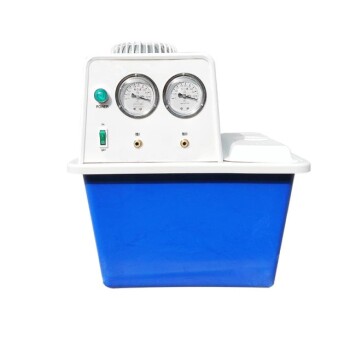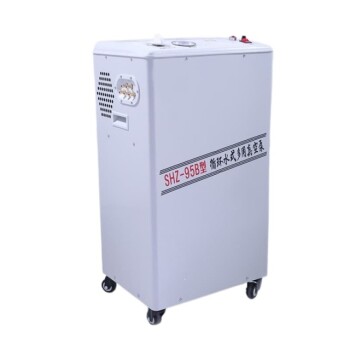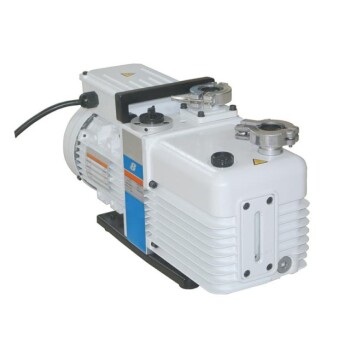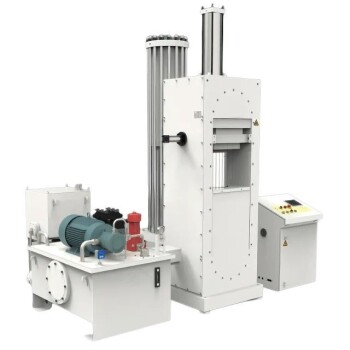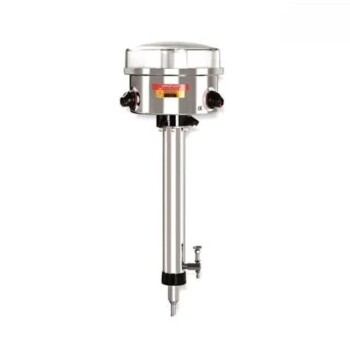The maximum pressure for a diffusion pump is typically limited by its design and operational constraints. Diffusion pumps are used to achieve high vacuum levels and are not designed to operate at high pressures. The maximum tolerable inlet pressure (foreline pressure) is usually around 1–10 Torr, depending on the pump's design and the type of fluid used. Exceeding this pressure can lead to fluid backstreaming, reduced pumping efficiency, or damage to the pump. The maximum exhaust pressure (backing pressure) is also critical and is typically around 0.5–1 Torr for most diffusion pumps. Operating beyond these limits can compromise the pump's performance and longevity.
Key Points Explained:

-
Definition of Maximum Pressure in Diffusion Pumps
- The maximum pressure for a diffusion pump refers to the highest pressure at which the pump can operate effectively without causing damage or performance degradation.
- This includes both the inlet pressure (foreline pressure) and the exhaust pressure (backing pressure).
- Exceeding these limits can lead to backstreaming of pump fluid, reduced vacuum performance, or mechanical failure.
-
Inlet Pressure Limits
- The maximum inlet pressure for a diffusion pump is typically in the range of 1–10 Torr.
- This limit ensures that the pump fluid (usually silicone oil or hydrocarbon-based fluids) does not vaporize excessively or backstream into the vacuum chamber.
- Higher pressures can overwhelm the pump's ability to maintain a stable vapor jet, leading to inefficiency.
-
Exhaust Pressure Limits
- The maximum exhaust pressure (backing pressure) is usually around 0.5–1 Torr.
- This pressure is maintained by a backing pump (e.g., a rotary vane pump) that supports the diffusion pump's operation.
- If the backing pressure exceeds this limit, the diffusion pump's vapor jet can collapse, causing a loss of pumping capability.
-
Factors Influencing Maximum Pressure
- Pump Fluid Type: Different fluids have varying vapor pressures and thermal stability, affecting the pump's maximum operating pressure.
- Pump Design: Larger pumps with more robust designs can handle slightly higher pressures compared to smaller or older models.
- Cooling System: Efficient cooling is essential to maintain the pump fluid's stability and prevent overheating at higher pressures.
-
Consequences of Exceeding Maximum Pressure
- Backstreaming: High pressures can cause pump fluid to flow backward into the vacuum chamber, contaminating the system.
- Reduced Efficiency: The pump's ability to maintain a high vacuum diminishes as pressure increases, leading to longer pump-down times.
- Mechanical Damage: Excessive pressure can strain the pump's internal components, potentially causing permanent damage.
-
Operational Best Practices
- Always use a backing pump with sufficient capacity to maintain the required backing pressure.
- Monitor inlet and exhaust pressures using appropriate gauges to ensure safe operation.
- Regularly maintain and replace pump fluid to ensure optimal performance and longevity.
By adhering to these guidelines, users can ensure that their diffusion pump operates efficiently and reliably within its specified pressure limits.
Summary Table:
| Parameter | Range | Details |
|---|---|---|
| Inlet Pressure | 1–10 Torr | Maximum tolerable pressure to prevent backstreaming and maintain efficiency. |
| Exhaust Pressure | 0.5–1 Torr | Critical backing pressure to avoid vapor jet collapse and loss of function. |
| Factors Affecting | Fluid type, design, cooling system | Influences the pump's maximum operating pressure. |
| Consequences | Backstreaming, reduced efficiency, mechanical damage | Risks of exceeding pressure limits. |
Ensure your diffusion pump operates within safe limits—contact our experts today for guidance!
